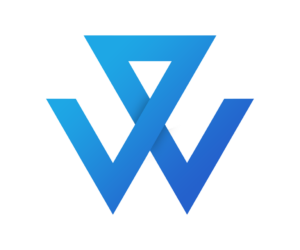In this age of digital distractions, personal productivity is more important than ever before. Notification bells and pop-ups, endless scrolling and endless emails—they all compete for attention. It’s all too easy to start work only to realize that answering emails has swallowed half the morning.
In fact, a Harvard Business School study tracked the time of top executives across 60,000 hours of their lives. They found that those CEOs spent an average of 9.7 hours working each weekday and 3.9 on the weekends. But they spent 23% of those hours on email. That’s nearly 2½ hours every day. What other things could they have accomplished with just a fraction of those hours?
In this article, we’ll look at ways to boost your personal productivity. You’ll learn how to spend less time answering emails and more time on business-critical tasks. You’ll learn how to make the most of your day.
But first, what is productivity? And what is it not?
Understanding Personal Productivity
Productivity measures efficiency. What it’s not is a measure of whether or not we look busy, or even how many things we accomplish. According to popular productivity writer James Clear:
“We often assume that productivity means getting more things done each day. Wrong. Productivity is getting important things done consistently.”
Note his emphasis: important things, consistently.
Impact on Success
We all have 168 hours in each week. How we spend those hours directly translate to accomplishment. Top musicians spend their time practicing, not procrastinating. Elite athletes train. And, high-powered executives work on their business and keep making it better.
To think about it another way, if you want your business to do important things, you’ll need to do important things yourself. Michael Gerber, author of the bestselling business book The E-Myth, argues that your business is a reflection of you. A disorganized business implies disorganized leadership. In the same vein, if you’re not personally productive, how can you expect your business to be productive?
Well-being and Balance
The average tech startup CEO works about 14 hours a day for 300 days of the year. That’s 4,200 hours. That’s time spent on a business instead of sleep, mindful consumption, exercise, or leisure. The phrase “work-life balance” sounds lovely in theory. Actually getting there is much harder.
One survey of business owners found that 75% of business owners have concerns about their mental health. Of those, 52% haven’t looked for help because they don’t have the time.
We should figure out what really matters and what doesn’t. Then, we should focus relentlessly on the highest priorities. Mental, physical, and spiritual health should be on that list.
How to Assess Your Current Workflow for Personal Productivity
Before you can start improving your productivity, you’ll need a benchmark to measure your progress against. How do you gather that information?
Self-Assessment Techniques
Take a big picture look at your productivity by doing some reflective journaling. Write down what your typical day, week, or month looks like. What are you doing, and for how long? What would you like to be doing, and for how long?
At the end of each day, you can look backwards and write a daily review. Think of it like a captain’s log: a record of what happened, essential data about your productivity journey.
Probably the most important tool in your arsenal is time-tracking. You might also call this a “productivity audit,” a way of comparing what you want to be doing to what you actually do.
Productivity Audits
Just like an athlete tracks every detail of their nutrition and exercise, you’ll be writing down what happens during every 15-minute interval of your day.
It might be a pain at first, but tracking your time for a week or even a month can help you accurately assess your productivity. Many people underestimate the amount of time they spend scrolling on their phones, idling before work, or chatting with coworkers.
Once you have a record of your time, you can then find your peak performance times. Are you getting the most done in the morning before work, on the train during your commute? Are you the most focused at night after everyone else has gone to bed? Do you hit a post-lunch slump?
It might also tell you what’s keeping you from working. Do you find yourself distracted by something specific at the same time every day? Now you’ll be able to remove that distraction or avoid the stimulus that sends you spiraling.
Tools for Tracking
If you want, you can track your time on paper the old-fashioned analog way. Other ways to track your time include:
- Productivity Journals: Full Focus Planner, bullet journals
- Time-Tracking Apps: Toggl, RescueTime
- Digital Tools: Trello for task management, Evernote for note-taking
Whatever tool you use, make sure it works for you.
How to Set Clear Goals and Priorities
After analyzing where your time goes, you must do something about it. Here are a few ways to make sure your goals are achievable.
SMART Goals
The SMART goal framework instructs you to choose Specific, Measurable, Achievable, Relevant, and Time-bound goals. Here’s what this might look like in practice.
An executive of a B2B SaaS company needs to “improve client retention.” As is, that’s very vague. But when the executive uses the SMART framework, the goal becomes: “By the end of the year, increase renewed Full Service contracts by an average of 10% per month among small business owners with fewer than 20 employees.”
- Specific: The client demographic is now narrower and easier to target.
- Measurable: Client retention can be tracked by the number of renewed contracts each month and compared to previous numbers.
- Achievable: For this business, we’ll assume 10% is a reasonable increase.
- Relevant: More renewed contracts means steadier business for the company.
- Time-bound: It must be done by the end of the year.
Eisenhower Matrix
The Eisenhower Matrix has you map your priorities into four quadrants using an x-y axis. On the x-axis, tasks are Urgent or Not Urgent, depending on whether it needs to be done now or can be done later. On the y-axis, tasks are Important or Not Important.
If a task is both Urgent and Important, it goes into the immediate to-do list. Meanwhile, if it’s a task that’s Important but Not Urgent, pursue it later. If it’s Urgent but Not Important, then you can delegate it to someone else. And finally, if a task is Not Urgent and Not Important, it should be ignored and removed from the list completely.
ABCDE Method
The ABCDE Method is similar to the Eisenhower Matrix, but here tasks are categorized from A (most important) to E (least important or delegate). Categorizing tasks into a range of importance helps sort out high-impact activities from low-impact activities. Remember, being productive is “getting important things done consistently.” If unimportant tasks fill your day, they will crowd out better uses of your time.
To read about a few more of these prioritization techniques, take a look at our article on mastering task prioritization.
Improve Personal Productivity by Optimizing Your Routine
In James Clear’s popular book Atomic Habits, he breaks down four stages of building a habit: cue, craving, response, and reward. He calls this a “habit loop.” For example, the smell of coffee might cause a craving for coffee, then the response of pouring a cup and the reward of drinking it, which reinforces the coffee habit all over again.
There are different kinds of habit cues, including 1) time, 2) location, 3) the preceding event, 4) an emotional state, or 5) other people. That’s why it’s so important to start your day right. Even if you’re not a morning person, the morning contains a whole bunch of cues that send you in one direction or another—potentially making you more productive or less.
Morning Routine
Each element of your morning routine can set you up to be effective and productive with the next. Beginning your day with a specific sequence of events—getting up, getting dressed, exercising, showering, and getting ready for work—can prepare you for a productive day.
Time Blocking
In his book Deep Work, professor Cal Newport advocates an approach called “time blocking.” He argues that fragmented, distracted work is the enemy of good work. To combat that, divide your day into chunks of time set aside for specific purposes. The brain is not truly meant to multitask; instead create spaces where you can focus on one task for a significant amount of time.
An executive who wants to reduce time sending emails and increase time thinking about the company’s strategy and vision might set aside time for each. During the time dedicated to email, no other tasks are allowed. During strategy development, there will be no checking email.
Task Batching
Like time blocking, task batching can increase productivity. It minimizes distractions and improves efficiency at work. To take advantage of this effect, group similar tasks together and complete them all at once.
Task switching—switching attention often between dissimilar tasks, including by multitasking—has a negative effect on concentration and creativity. Researcher Clifford Nass says that people who multitask constantly have “developed habits of mind that make it impossible for them to be laser-focused.”
One small company founder, the head of a grant writing agency, combats this multitasking distraction by working on administrative activities only on Thursdays. That way she can spend the rest of her week serving her clients.
Breaks and Downtime
Attention is a limited resource that can be drained and exhausted. Mental effort is actually tiring. (In fact, the brain uses up to one half of all the body’s stored glucose as energy.) So how can we restore that energy?
Combine periods of focused attention with short breaks. The Pomodoro Technique, for example, suggests 25 minutes of work followed by a 5-minute break.
The key, however, as Cal Newport observes in Deep Work, is to take a boring break, one that does not demand attention. Taking a walk in nature is the kind of break that will help restore attention reserves. Taking a walk through a city or scrolling on a phone, however, both demand attention and will not actually restore your ability to work well.
How a Virtual Assistant Improves Personal Productivity
At the end of the day, there are a lot of ways to improve personal productivity. All of these methods focus on one thing: Setting aside time for what’s actually important and minimizing the time we spend on peripheral activities.
Benefits of Hiring a VA
A virtual assistant can free up valuable hours of your day and allow you to focus on “getting important things done consistently.”
If you’re spending too much time on administrative work or small mosquito-like tasks, delegate them to a virtual assitant. Ask yourself: What are the things only you can do? Then delegate the rest!
Types of Tasks to Delegate
For example, if 2½ hours of every day are lost in emails, a virtual assistant could sort your emails and forward only those that need your personal attention. In the meantime, all those frequently asked questions, customer support problems, and travel scheduling issues can be taken care of without you.
Plus your virtual assistant can take care of scheduling meetings, posting on social media, doing research and data entry, and other pesky tasks.
Maximizing Efficiency with a VA
Like any other employee or subcontractor, a virtual assistant works best with you when there is clear communication. Set up expectations up front. Talk about the kinds of tasks that the assistant will need to handle, and how you’d like them to be handled.
You might also provide your virtual assistant with a manual of Standard Operating Procedures (SOPs), especially if you have specific standards for certain kinds of work. Then, keep communicating regularly. You can use tools like Trello or Slack to help.
Wing Assistant Boosts Your Personal Productivity
Hopefully you’ll spend some time this week identifying what’s most important. Audit your personal productivity, set clear goals and priorities, and then optimize your routine. If you still don’t have enough time, consider Wing Assistant.
At Wing Assistant, we help high-powered professionals boost their personal productivity and add hours to their day. We even offer virtual assistants for executives, and we only hire the top 1%.
Are you ready to get started? Check out our executive assistant service today.
Aya is Wing Assistant’s blog manager. When she’s not wrangling content briefs, editing article drafts and handling on-page SEO, she is crafting messages for Wing’s other communication materials. Aya writes about SaaS startups, marketing for startups, search engine optimization, and pop culture.






